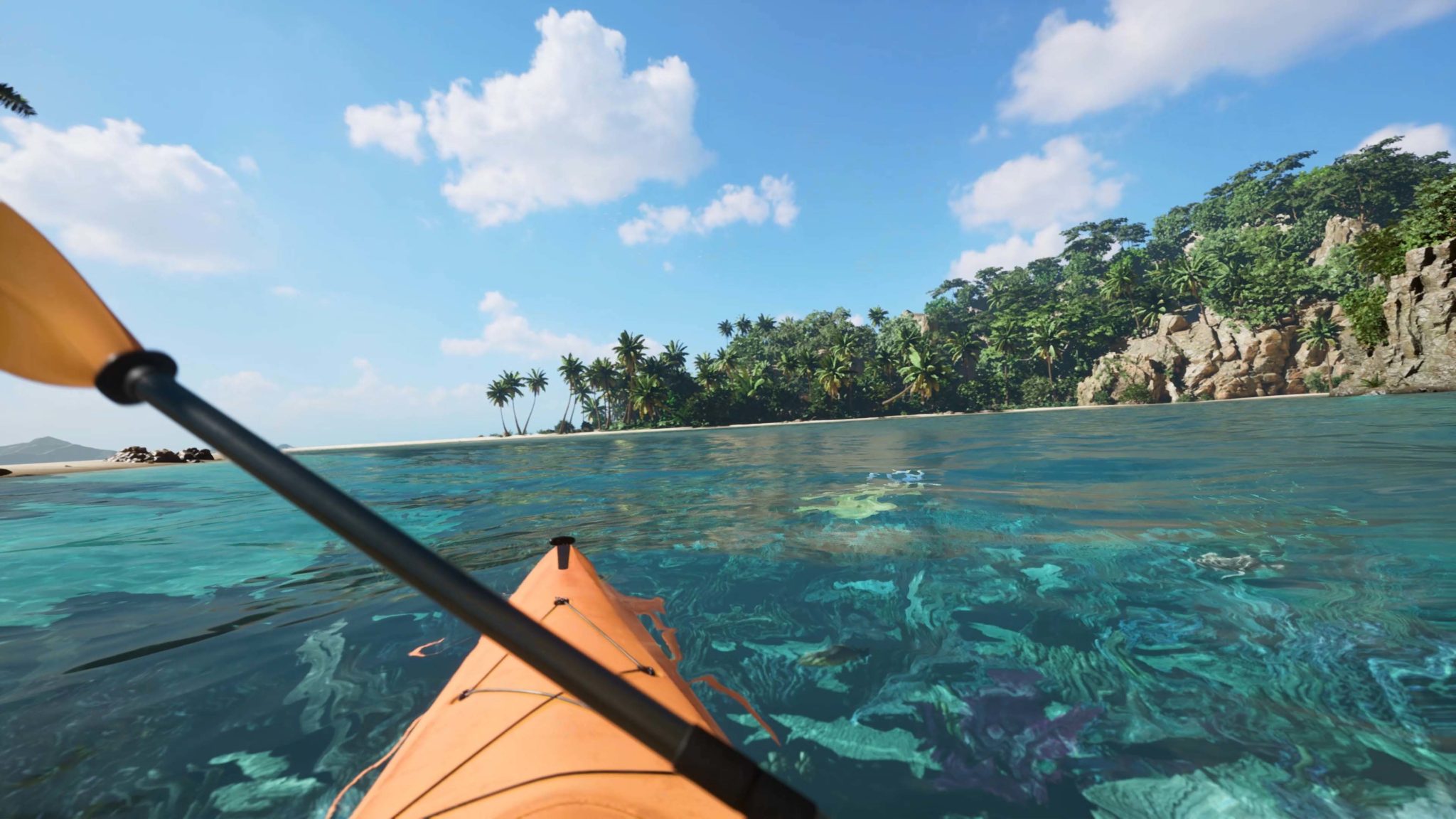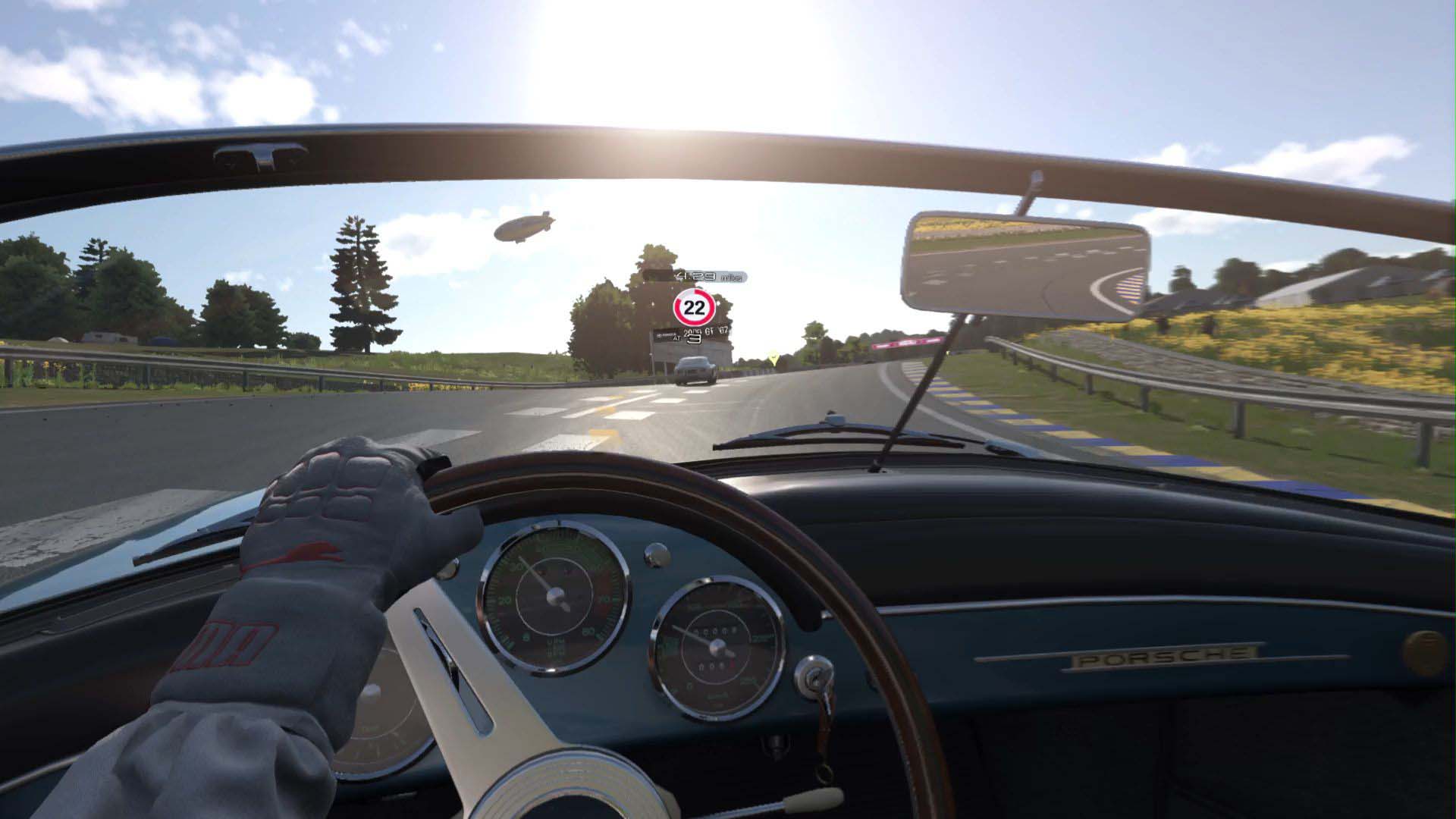- Lifestyle & Sports
- 05 Apr 23

Is This The Real Life? Is this just fantasy? Pavel Barter attempts to decipher which is which, as he dives into the world of Sony’s new virtual reality offering, the PlayStation VR2.
PlayStation’s first excursion into virtual reality in 2016 was a spaghetti junction of cables and boxes that took an age to set up. This second effort for PS5, the VR2, is a more streamlined affair. Sure, the headset still makes you look like a lost member of Daft Punk, but this time a single cable connects it to the console – limiting opportunities for you to trip over the cat and fall out the window.
A couple of cordless hand-grip controllers, fully charged, keep players immersed for around four hours. A button on the headset switches the display from the virtual to the real world, allowing you to talk to companions, orientate yourself, and remove potential obstacles like cups of tea or small children, without the need to remove your helmet. In this augmented mode, the headset maps out your play area, turning your living room into an outtake from The Matrix.
 Kayak VR Mirage.
Kayak VR Mirage.Our first excursion was in Kayak VR: Mirage (5/10). This virtual kayaking game, in which you paddle along rivers in Antarctica and South America, showcases the headset’s 4K powers. You can race against other online players – frantically paddling your oar-controllers like the worst dad dancer – but it can also be enjoyed as a meditative simulator. Gaze idly upon wildlife, flora and stars, and splash the water like an excited toddler at bath time.
Advertisement
Horizon: Call Of The Mountain (6/10) is Sony’s PSVR2 flagship launch title. There’s instant awe as you’re introduced to a primal-futuristic world, in which dinosaur-robots plod over your head and mountainous landscapes stretch into the distance. Much of the game involves vertigo-inducing climbs up cliff faces and pissing about with a bow and arrow.
 Horizon: Call of the Mountain.
Horizon: Call of the Mountain.Grab the bow with one controller, arrows with the other; then harpoon the weak spots on angry mechanical T-Rexs. The repetitive tasks, and lack of open world exploration, limits Call Of The Mountain’s appeal, but the beautiful locations and the brief excursions where you shake maracas, bang drums, and paint walls, hint at possibilities for future PSVR2 titles.
Out of the 40-odd launch title games for VR2, some of the best experiences are updates of past hits.
Resident Evil Village (7/10) was terrifying in 2D, but living the virtual experience – especially with the physical, vibrating feedback from the headset and controllers – turns this survival horror into the stuff of heart attacks. After tentatively venturing into the Village for the first time, our encounter with a terrified local was abruptly interrupted by a werewolf and a basement full of dead bodies. Terrifying – keep a spare pair of trousers close at hand.
Advertisement
 Resident Evil Village.
Resident Evil Village.No Man’s Sky (8/10) is a more sedate experience that opens up the cosmos. Players explore a near-infinite, procedurally-generated galaxy, discovering planets while mining for resources and interacting with other players. In VR, a moment at the start of the game, when you repair your spacecraft and take off into outer space, is gob-smacking.
The same might be said for the VR version of Grand Turismo 7 (9/10), a game that was already borderline photo-real in 2D. Sitting in the driver’s seat of a Lamborghini or Porsche, staring through the windshield and navigating corners at top speed, without the risk of death, is a dream. Combine the headset with a peripheral racing pedal and wheels, and wave goodbye to your social life.
 Grand Turismo 7.
Grand Turismo 7.There are plenty of new games released for VSR2. Zombieland: Headshot Fever Reloaded (3/10) is an arcade shoot-em-up spin-off of the Zombieland movies, in which your controllers turn into on-screen guns. The cell-shaded graphics are retro-fit, but the gameplay – mowing down an endless parade of gurning goons – gets tiresome.
Instead, fire up the cyberpunk shooter Rez Infinite (8/10). This 3D rail shooter – which has been around since the days of the Dreamcast console – makes fine use of the PSVR’s eye-tracking tech. It is Tron crossed with a ’90s rave, as you control an avatar hurtling through cyberspace, while shooting down viruses to the rhythmic beats of house music.
Advertisement
Psychedelic visuals and music are on the menu in Tetris Effect: Connected (5/10), a VR revamp of the classic puzzle game. With your headset on, the Tetris board floats before you like an ancient godly monolith – and as you pull down blocks and destroy lines, sparks fly into your nether regions. It’s Tetris at an ayahuasca retreat in New Mexico.
Like your average hallucinogenic, virtual reality can induce nausea and it’s a solitary (rather than a shared) experience. Furthermore, the headset costs €600 – more than the price of a PS5 console – which is out of reach for many mortals during the cost-of-living crisis. But the technology’s giant leaps in ease of use, comfort, motion tracking, audio and visuals, opens up a new era for interactive entertainment (and viral VR living room fails).
Read more reviews in the new issue of Hot Press, out now.










